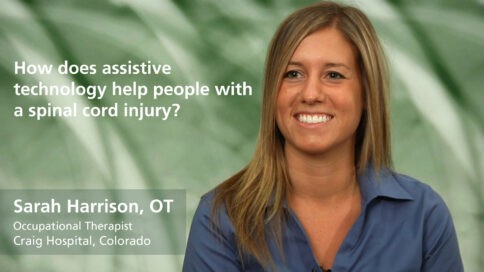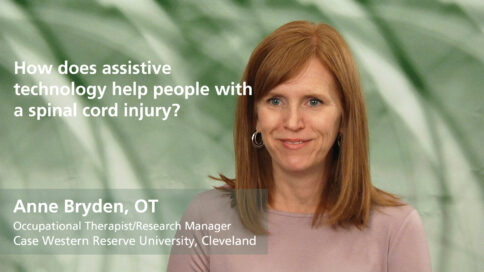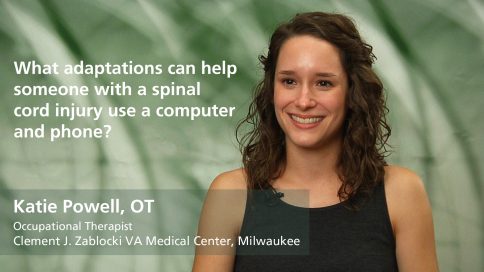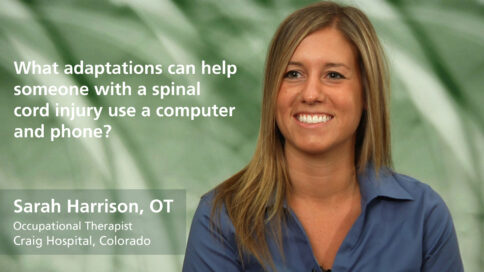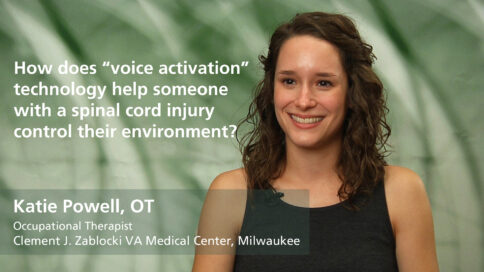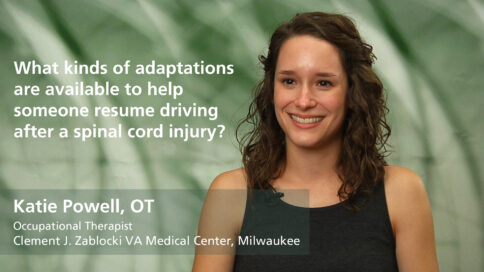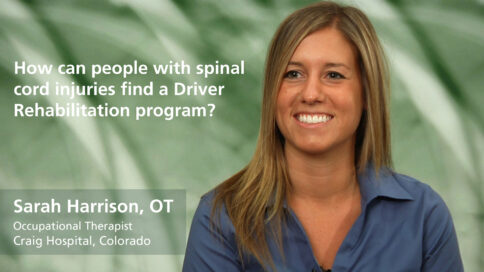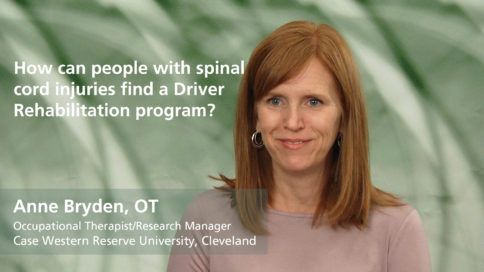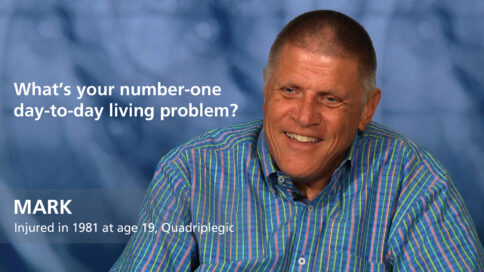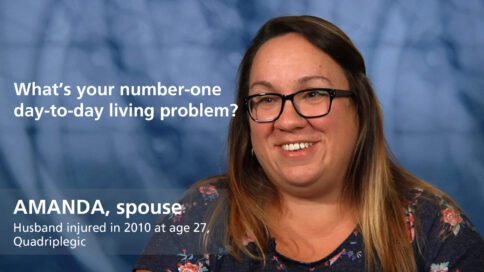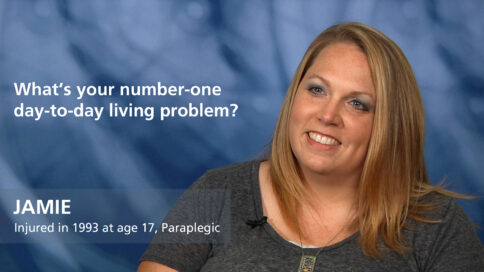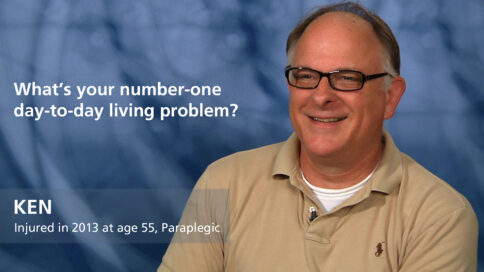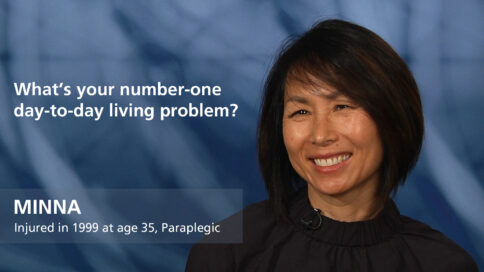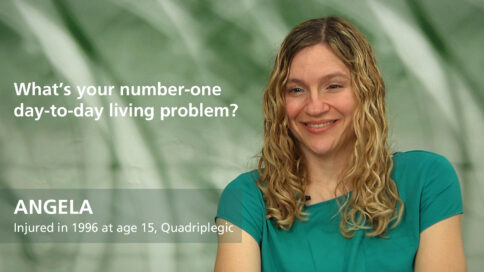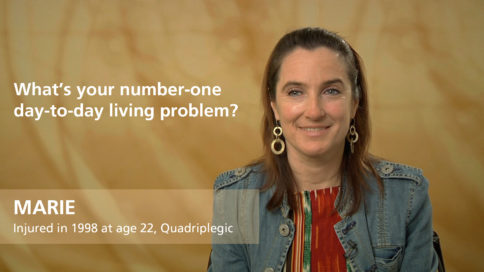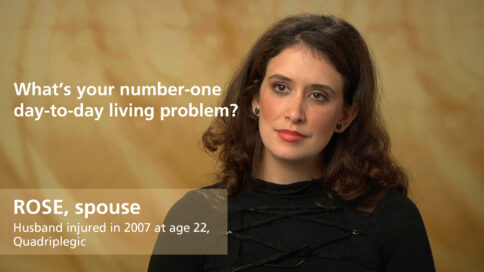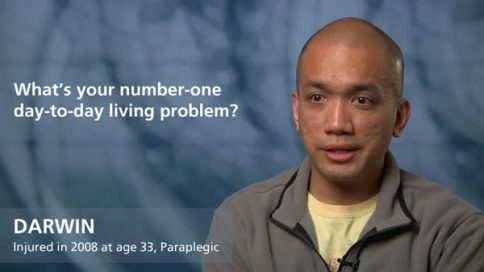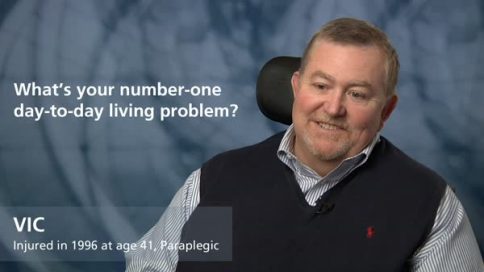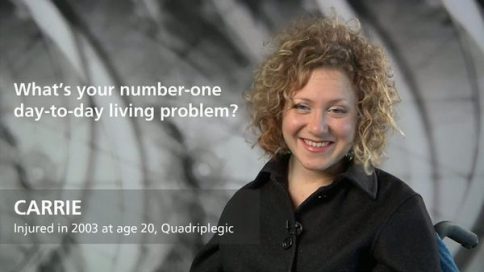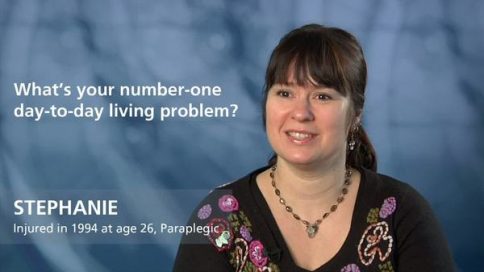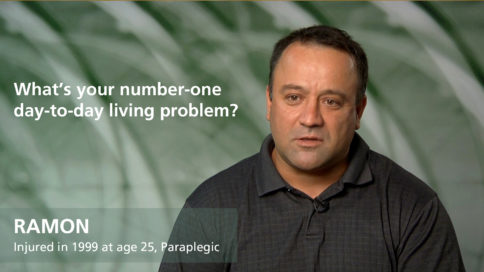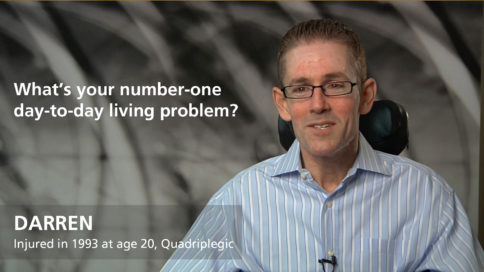How does “assistive technology” help with everyday activities? - Kim Eberhardt Muir, MS
|
|
How does “assistive technology” help with everyday activities? |
|
Kim Eberhardt Muir, MSProgram Specialist, Spinal Cord Injury Program, Rehabilitation Institute of Chicago |
||
| Read Bio | More Videos by Kim Eberhardt Muir | |
|
Share |
||
Transcript
So, with assistive technology, there’re many devices that can help with using the computer. It can be very simple, from a typing stick to a track ball, and it can range from that level to a voice dictation system, or an eye tracking system, that you basically use your head to control the mouse or curser. And then you hit a switch, or you say a word to operate the mouse. Some of these are a little bit more expensive, the voice dictation tends to be a little less expensive; a lot of people do like that option. And if you have good head control, you can also go for the head system, and then use your voice to type. Other things—the EADL is the Electronic Aids to Daily Living, and this is very helpful for people to control things in their environment, whether it be a DVD, opening a door for a caregiver, for a family member, turning on a light, a fan for temperature control; it can be done by a simple switch, it can be done by your voice, and that’s a very common thing a lot of our clients use. Also, a high-tech call system. This is a more complex then perhaps a baby monitor; it allows an intercom to be used to see who’s at the door, to express needs, it can be two-way conversation. And there’s actually now home monitoring systems, so somebody in a different home, in different state can be watching, perhaps, a family member in their house to see their activity level, to see how they’re doing, if they’re in trouble. And that’s nice for people that may be far away from their family, but also want to keep an eye on them from time to time.
Show Less|
|
||
add
How does “assistive technology” help with everyday activities? |
||
Kim Eberhardt Muir, MSProgram Specialist, Spinal Cord Injury Program, Rehabilitation Institute of Chicago |
More Videos by Kim Eberhardt Muir | |
| Transcriptadd | share | |
So, with assistive technology, there’re many devices that can help with using the computer. It can be very simple, from a typing stick to a track ball, and it can range from that level to a voice dictation system, or an eye tracking system, that you basically use your head to control the mouse or curser. And then you hit a switch, or you say a word to operate the mouse. Some of these are a little bit more expensive, the voice dictation tends to be a little less expensive; a lot of people do like that option. And if you have good head control, you can also go for the head system, and then use your voice to type. Other things—the EADL is the Electronic Aids to Daily Living, and this is very helpful for people to control things in their environment, whether it be a DVD, opening a door for a caregiver, for a family member, turning on a light, a fan for temperature control; it can be done by a simple switch, it can be done by your voice, and that’s a very common thing a lot of our clients use. Also, a high-tech call system. This is a more complex then perhaps a baby monitor; it allows an intercom to be used to see who’s at the door, to express needs, it can be two-way conversation. And there’s actually now home monitoring systems, so somebody in a different home, in different state can be watching, perhaps, a family member in their house to see their activity level, to see how they’re doing, if they’re in trouble. And that’s nice for people that may be far away from their family, but also want to keep an eye on them from time to time.
